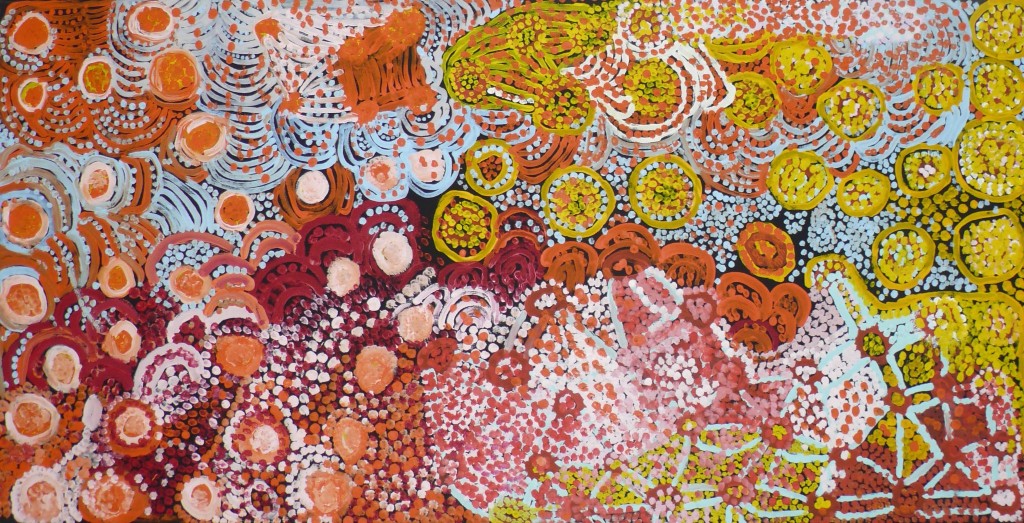
Carol Maayatja Golding – Tjukurla Pirni, 2010
76.2 x 152.4cm – Acrylic on canvas
Provenance: Warakurna Artists, WA ; Exhibited in 2010 Telstra National Aboriginal and Torres Strait Islander Art Award (NATSIAAA), Museums and Art Galleries of the Northern Territory, Darwin ; IDAIA – International Development for Australian Indigenous Art; Private Collection Brocard-Estrangin.
‘When I look back on the past ten years of my adventures in Aboriginal Art, I realize that I have been mostly drawn to and interested in female artists. This was not an intentional, or even a conscious choice. I probably naturally evolved from the Papunya community, my attention being called by its meaningful pictorial and almost monochromatic grammar, towards a new world, a world inhabited by more colour.
With a fresh eye, awake, I succumbed to the charm of the “mother goddesses” Aboriginal artists’ bold creations, while discovering new communities, from Utopia to Bidyadanga, including Balgo, Tjala, or Mangkaja. I believe that the paintings carried out by women offer a unique vision of the Aboriginal realm.
In addition to representing the feminine aspect of myths and of the Dreaming, they tell us of ancestral itineraries of Desert berries, plants and roots picking. These nourishing elements feature on canvases – extrapolated, transfigured or duplicated in real breaks and inventions. On the canvas, these tangible fruits discuss with and illuminate spirituality, in a process of nurturing both body and mind; they translate their intrinsic tie to the land with restrained modesty.
Their talent as colorists re-invents places in a pigmented language, without words, and more spontaneously opens our inner doors to emotions from another time. There lies in it a poetics of absence, of vanished homelands, of this umbilical cord that binds to the land, to our land.’
Bertrand Estrangin (IDAIA’s translation in English)
About the author:
Bertrand Estrangin, important European collector of Aboriginal art, Inuit art and objects (Brocard-Estrangin Collection) got caught up into IDAIA’s action week of celebrating International Women’s Day 2013 (IWD 2013) and shares with us his perception of Aboriginal women’s art.
To learn more, here is a link to Mr. Bertrand Estrangin’s blog: http://
Artwork © The Artist and Warakurna Artists.